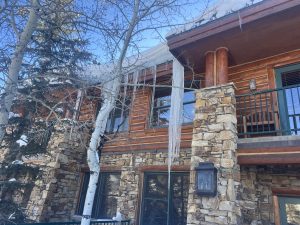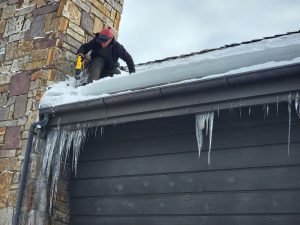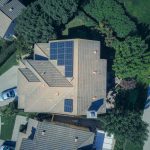Understanding Ice Dams on Your Roof
Winter’s arrival brings a host of challenges for homeowners, with ice dams being one of the most concerning. These icy formations can appear almost overnight, creating an elegant yet problematic spectacle on rooftops. Ice dams result from a sequence of freeze-thaw cycles, which may look harmless but can have serious consequences. When snow on the roof begins to melt due to warmer roof surfaces, the water flows down to the colder edges and refreezes, forming an ice barrier. As this process repeats, the ice dam grows, preventing proper drainage of subsequent meltwater.
The water that is trapped behind the dam can seep under shingles, penetrate roofing materials, and eventually leak into the home. This can cause a range of issues, from water stains on ceilings and walls to structural damage and mold growth. Additionally, the weight of accumulated ice can stress the roof’s structure, potentially leading to physical damage.
The importance of recognizing and addressing ice dams cannot be overstated. For homeowners in cold climates, understanding what ice dams are and how they develop is the first step in safeguarding their property. As picturesque as they may seem, the underlying risks associated with ice dams make it crucial to remain vigilant and take preventive measures to protect your home during the winter months.
Causes of Ice Dams
Ice dams are primarily a product of temperature fluctuations on your roof. If the upper areas of the roof are warmer than the edges, the lack of insulation in the attic causes snow to melt. The water then trickles down to the colder edges, where it refreezes and forms a dam. Over time, this cycle continues, exacerbating the problem.
Two main factors contribute to this temperature disparity: inadequate insulation and poor ventilation. When a roof lacks sufficient insulation, heat from inside the house escapes, warming the roof and melting the snow. Similarly, inadequate ventilation fails to maintain an even temperature across the roof, allowing the conditions for ice dams to develop. Snowfall coupled with varying roof temperatures creates an environment ripe for ice dams, emphasizing the importance of both proper insulation and ventilation.
Ice Dams in Colorado
Colorado’s climate poses a significant challenge for managing ice dams, largely due to its variable weather patterns. The state experiences rapid and frequent temperature changes that create ideal conditions for the formation of ice dams. After a heavy snowfall, daytime temperatures often rise enough to cause snow to melt. However, as night falls, the temperatures plummet, leading to the refreezing of the melted snow at the edges of roofs. This cycle of melting and refreezing is a key factor in the development of ice dams.
The high altitude in many parts of Colorado also exacerbates the problem. Elevated areas experience more intense sunlight, which can accelerate snowmelt even in the middle of winter. This rapid melting can contribute to a more significant and quicker formation of ice dams when temperatures drop again. Homeowners in these regions must be particularly mindful of the conditions that foster these formations.
In addition to temperature swings, the architectural design of many Colorado homes can also contribute to the problem. Homes with complex rooflines, multiple peaks, and valleys are more susceptible to uneven heating and cooling, which can result in localized ice dam formation. These areas can trap snow and ice, further complicating efforts to prevent dams from forming.
Given the severity of the winter weather, it’s not uncommon for residents to see multiple freeze-thaw cycles in a single day. This means that the same area of the roof can experience repeated episodes of melting and refreezing, which significantly increases the likelihood of ice dam formation. Such conditions demand a proactive approach to winter home maintenance.
Preventing Ice Dams
Preventing ice dams requires a combination of strategies to manage heat loss and ensure proper drainage. First, check that your attic is well-insulated. Insulation helps keep the heat inside your home, preventing the roof’s surface from warming. This minimizes the melting and refreezing of snow, a primary cause of ice dams.
Ventilation is another key factor. Make sure your roof and attic are properly ventilated to maintain a uniform temperature across the roof’s surface. This helps prevent the localized warming that can lead to snowmelt and subsequent ice dam formation.
Heat tape offers a targeted solution for problem areas prone to ice buildup. Utilizing heat tape can be particularly beneficial in this environment. When properly installed, it creates a clear path for water to flow toward the gutter, preventing dangerous accumulations. Homeowners should have professionals install heat tape in problematic areas to ensure these parts remain free from ice buildup.
Routine roof maintenance also plays a crucial role. Regularly clear your gutters and downspouts to ensure that melting snow can flow freely. A roof rake can be a useful tool for removing accumulated snow, especially after heavy snowfalls. This reduces the volume of meltwater that could potentially refreeze and contribute to ice dams.
By focusing on these key areas — insulation, ventilation, heat tape, and maintenance — you can significantly mitigate the risk of ice dams and protect your home from winter-related damage.




You must be logged in to post a comment.